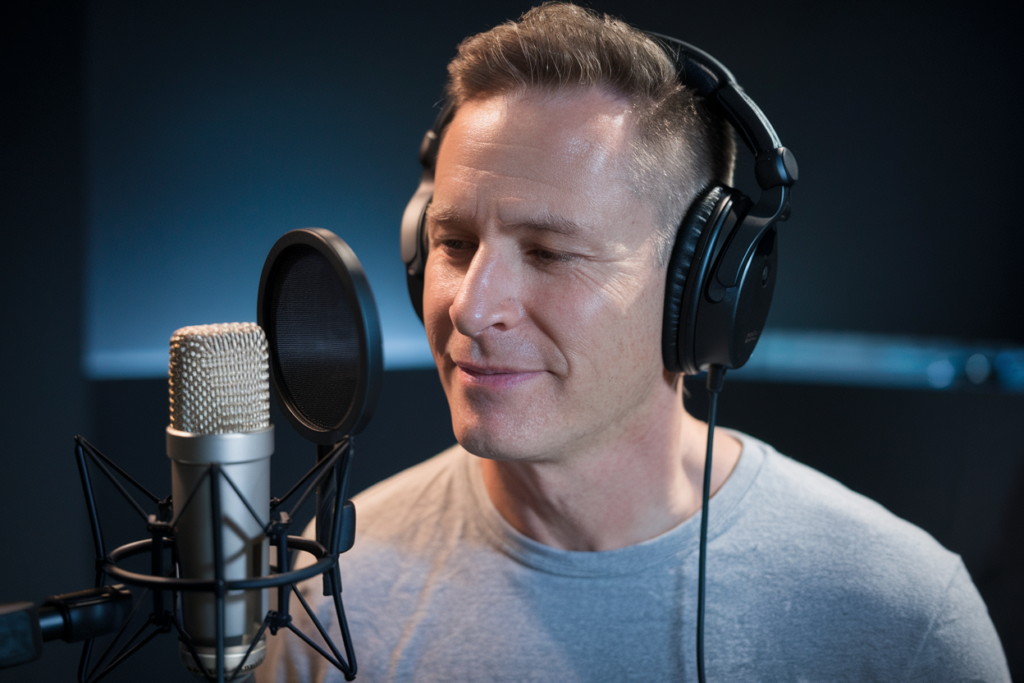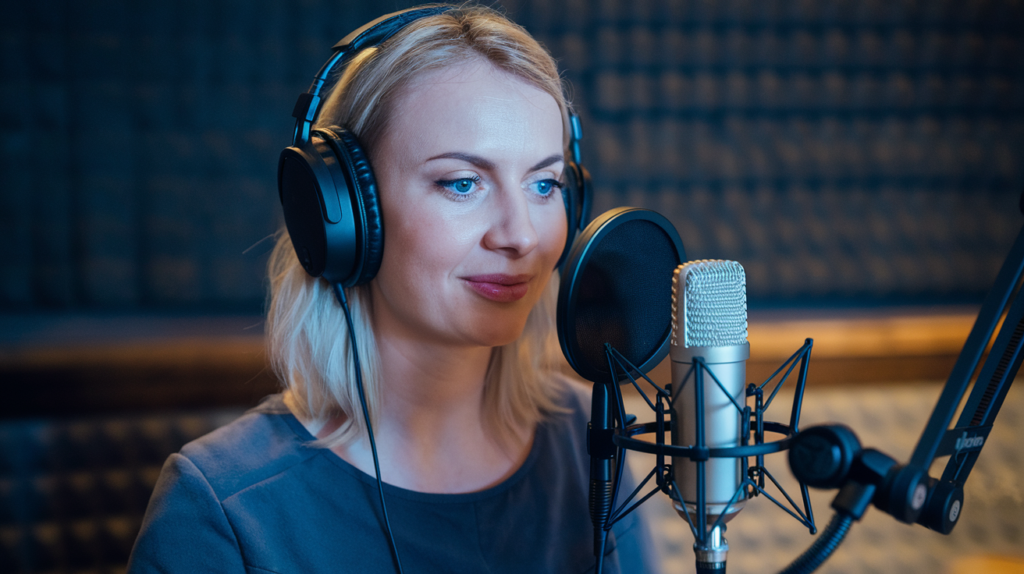Key Takeaways
- Authenticity in Dubbing: Polish dubbing is an art form that goes beyond translation, ensuring foreign films and TV shows feel authentic through skilled voice acting and precise lip syncing.
- Enhancing Viewer Experience: Effective dubbing captivates audiences by aligning dialogue seamlessly with on-screen action, creating a more immersive storytelling experience.
- Cultural Adaptation: Adapting cultural references and humor is crucial for maintaining the original intent while making dialogues sound natural in Polish, enhancing relatability for local viewers.
- Voice Casting Importance: Selecting the right voice talent significantly impacts the quality of dubbing; actors must convey emotions and nuances that resonate with audiences.
- Challenges of Synchronization: Achieving perfect lip sync poses challenges, requiring meticulous timing from voice actors to ensure alignment with character movements and dialogue pacing.
- Future Trends in Technology: Technological advancements are improving the quality of Polish dubbing, with innovations like automated lip-sync technology enhancing both efficiency and authenticity in performances.
Ever wondered how Polish dubbing manages to make foreign films and TV shows feel so authentic? It’s not just about translating lines; it’s an art form that requires perfect lip sync to keep you immersed in the story. When done right, dubbing can transform your viewing experience, making characters come alive in a way that feels natural.
But getting that lip sync just right isn’t easy. It involves skilled voice actors who match their performances to the original dialogue while ensuring every word aligns with the on-screen action. If you’ve ever struggled with poorly dubbed content that takes you out of the moment, you’re not alone. Let’s dive into why high-quality Polish dubbing is essential for creating captivating cinematic experiences and how it elevates storytelling for audiences everywhere.
Overview Of Polish Dubbing
Polish dubbing plays a vital role in localizing foreign films and TV shows, ensuring they resonate with domestic audiences. This process involves more than just translating scripts; it demands skilled voice actors who can deliver performances that match the original characters’ emotions and intentions.
The art of lip sync is essential in Polish dubbing. Achieving precise synchronization between dialogue and on-screen action enhances viewer immersion. Voice talent must not only replicate the original script but also align their timing to create a seamless experience for viewers.
Selecting the right voice artist significantly impacts the final product. A talented voice over actor understands how to convey nuances through tone and delivery, making characters relatable while preserving authenticity. The selection process often includes auditions where various voiceovers are tested against specific scenes, allowing directors to choose the best fit for each role.
Challenges arise during this creative endeavor, as cultural references or humor may require adaptation without losing essence. Skilled voiceover artists navigate these complexities, ensuring that dialogues sound natural and engaging in Polish while fitting seamlessly into the visual context.
As you explore options for high-quality dubbing services, consider how effective Polish dubbing elevates storytelling across genres—whether it’s animated features or dramatic series. Engaging voice talent enhances character development and keeps audiences captivated throughout their viewing experience.
Importance Of Dubbing In Film And Television
Dubbing plays a crucial role in film and television, particularly when localizing content for Polish audiences. It enhances the viewing experience by making foreign films and TV shows accessible and relatable.
Enhancing Viewer Experience
Effective dubbing captivates viewers, allowing them to engage with the story without distractions. Precise lip sync ensures that dialogues align seamlessly with on-screen action, creating an immersive atmosphere. Skilled voice actors bring characters to life through their performances, conveying emotions and nuances that resonate with the audience. When you see a character speaking in their native language—thanks to talented voice artists—you’re more likely to connect deeply with the narrative.
Cultural Adaptation
Cultural adaptation is essential in dubbing, especially for humor and references unique to specific regions. A competent voice over artist understands these subtleties and skillfully adapts dialogues so they sound natural in Polish while preserving the original intent. This process involves not just translation but also interpreting cultural contexts, ensuring that jokes land effectively without losing meaning. By selecting experienced voice talent who grasp these nuances, productions can deliver authentic experiences that honor both the source material and local culture.
High-quality dubbing transforms storytelling across genres, enriching cinematic experiences for audiences everywhere while keeping them engaged from start to finish.
Techniques In Polish Dubbing
Polish dubbing employs various techniques that enhance the viewer’s experience and ensure authenticity in storytelling. These methods focus on voice casting and precise lip syncing, which are crucial for delivering high-quality content.
Voice Casting
Voice casting plays a pivotal role in Polish dubbing. Selecting the right voice actor can make or break a project. The goal is to find voice talent whose performance aligns with the character’s essence in the original material. When you choose a skilled voice artist, they bring unique nuances to their delivery that resonate with audiences. Their ability to convey emotions through tone significantly impacts how viewers connect with characters.
Considerations during voice casting include vocal range, emotional expressiveness, and familiarity with cultural contexts. A competent voice over talent understands regional humor and references, ensuring dialogues sound natural while preserving original intent. By prioritizing these factors, productions can create engaging experiences that captivate local viewers.
Lip Syncing Techniques
Lip syncing techniques are essential for creating seamless integration between audio and visual elements in Polish dubbing. Achieving perfect synchronization requires meticulous attention to detail from talented voice actors who must align their performances closely with on-screen actions.
One popular method involves timing dialogue delivery according to character mouth movements while maintaining emotional authenticity. This approach ensures that lines not only match lips but also preserve the scene’s overall mood and pacing.
Another technique focuses on adapting scripts without losing context, allowing for variations in phrasing or word choice when necessary. Skilled professionals excel at this adaptation process since it helps maintain flow without straying too far from the original meaning.
Investing time into refining these techniques results in polished final products that leave audiences immersed in storytelling rather than distracted by mismatched audio-visual cues.
Challenges In Polish Dubbing
Polish dubbing faces unique challenges that impact the overall quality and effectiveness of localization.
Maintaining Original Intent
Maintaining the original intent during dubbing is crucial. Every piece of dialogue carries specific emotions, humor, and cultural nuances. You want voice actors to embody these elements while delivering lines in Polish. This process requires skilled voice artists who grasp both the source material’s context and the target audience’s expectations. If a joke falls flat or an emotional moment loses its weight due to a poor translation or delivery, it can detract from viewers’ experiences.
Synchronization Issues
Synchronization issues pose another significant challenge in Polish dubbing. Achieving perfect lip sync demands meticulous timing and attention to detail from voice talent. Voice actors must align their performances with character mouth movements while ensuring vocal delivery matches original pacing and emotion. Discrepancies can disrupt immersion, pulling viewers out of the story. Thus, strong coordination between directors, sound engineers, and voice over talent becomes essential for flawless integration of audio with visual elements.
By addressing these challenges head-on through careful casting and collaboration, you enhance the quality of dubbed content for your audience.
The Future Of Polish Dubbing
Polish dubbing continues to evolve, driven by technological advancements and changing audience preferences. As the industry adapts, it enhances viewer experiences through improved quality and accessibility.
Technological Advances
Recent innovations in audio technology significantly impact Polish dubbing. High-definition sound and advanced editing software allow voice actors to deliver performances with greater clarity and precision. Enhanced recording techniques ensure that every nuance of a voice artist’s performance is captured effectively, making dialogues feel more authentic. Additionally, automated lip-sync technology streamlines the synchronization process, reducing time while maintaining high-quality standards.
Streaming platforms play a vital role in this evolution too. With their increasing popularity, they demand localized content quickly while ensuring cultural relevance. Voice talent now benefits from these platforms’ reach as they engage with wider audiences across various demographics.
Trends In Audience Preferences
Audience preferences are shifting towards immersive experiences that resonate emotionally with viewers. Today’s audiences expect more than just accurate translations; they seek performances that embody characters’ emotions and intentions authentically. This expectation drives the need for skilled voice artists who can bring depth to their roles.
Moreover, viewers increasingly favor dubbed content over subtitles for convenience during viewing sessions. As a result, there’s a growing demand for talented voice actors capable of delivering lines naturally while aligning closely with original performances. Engaging storytelling combined with expert voiceover work creates captivating cinematic experiences that draw in audiences of all ages.
The future of Polish dubbing hinges on embracing technological innovations while catering to evolving audience expectations for authenticity and emotional resonance in performances.
Conclusion
Polish dubbing plays a crucial role in bringing foreign films and TV shows to life for local audiences. Its success hinges on the delicate balance of language, emotion, and cultural nuances. As technology advances and audience preferences shift towards more immersive experiences, the demand for skilled voice artists who can deliver authentic performances continues to grow.
By investing in high-quality dubbing that prioritizes lip sync and emotional resonance, you’re not just improving accessibility but also enhancing viewer engagement. The future of Polish dubbing promises exciting developments that will further enrich the storytelling experience while ensuring it remains relevant to viewers’ expectations. Embracing these changes is key to maintaining the art’s integrity and appeal.
Frequently Asked Questions
What is Polish dubbing?
Polish dubbing involves translating and recording the dialogue of foreign films and TV shows in Polish. It aims to make content accessible and authentic for local audiences, enhancing their viewing experience.
Why is lip syncing important in dubbing?
Lip syncing is crucial as it aligns the voice actors’ performances with the on-screen characters’ mouth movements. Effective lip sync helps maintain immersion and authenticity, making the dubbed version feel more natural to viewers.
What challenges do voice artists face in Polish dubbing?
Voice artists encounter challenges such as synchronizing their performances with original dialogue, capturing emotional nuances, and adapting cultural references. These factors are essential for delivering a high-quality dubbed product that resonates with the audience.
How does voice casting impact Polish dubbing?
Voice casting significantly influences the success of a project. Choosing the right voice actor based on vocal range, emotional expressiveness, and cultural familiarity ensures that characters are portrayed authentically and resonate with viewers.
What role does cultural adaptation play in dubbing?
Cultural adaptation ensures that humor, idioms, and references are relevant to Polish audiences. This process requires skilled voice artists who can interpret these elements while maintaining the original intent of dialogues for an authentic experience.
How is technology shaping the future of Polish dubbing?
Technological advancements like high-definition sound and automated lip-sync technology are improving quality and efficiency in dubbing. Streaming platforms also drive demand for quickly localized content that meets evolving audience preferences for authenticity.
Why do viewers prefer dubbed content over subtitles?
Viewers often favor dubbed content because it offers a more immersive experience without requiring them to read subtitles. This convenience allows audiences to enjoy visual storytelling fully while engaging with characters’ emotions through their voices.







